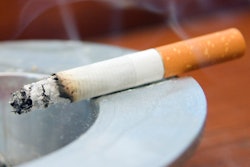
Should occupational hazards be considered when deciding whether individuals should receive CT lung cancer screening? Researchers from New York investigated that question by performing CT lung screening scans on a population of nuclear weapons workers, publishing the results August 23 in the American Journal of Public Health.
A team led by Dr. Steven Markowitz of the City University of New York conducted a study that focused on finding lung cancer among workers at nuclear weapons facilities located in rural areas. While occupation was not a statistically significant indicator of lung cancer risk, a variety of factors suggested that CT lung screening of blue-collar workers in rural areas could be a good idea -- as long as they meet established screening criteria.
The researchers wanted to find out if screening can be justified outside of the specific population covered by the National Lung Screening Trial (NLST). While the NLST focused mostly on high-risk smokers, its study population also consisted primarily of educated people living in metropolitan areas. Would adding additional factors such as occupation to a lung cancer screening protocol make it more effective?
The study included 7,189 former U.S. Department of Energy (DOE) nuclear weapons workers from nine rural communities across five states in a union-sponsored lung cancer screening program administered between 2000 and 2013. Study participants were eligible based on factors such as age, smoking history, chest x-ray evidence of asbestos-related parenchymal or pleural fibrosis, and positive results on the beryllium lymphocyte proliferation test, which is commonly used to test for exposure to beryllium, a metal used in nuclear weapons production.
The program was primarily conducted with two mobile CT scanners; the average effective dose per exam was 1 mSv, with 16,229 scans performed. Baseline CT exams and follow-up scans of indeterminate nodules were offered starting in the year 2000; one-time annual CT scans were offered at one year following the baseline exam beginning in 2002.
Of the 7,189 study participants, 20.4% were current smokers and the rest were former smokers. Of 6,415 nuclear weapons workers who had chest x-rays before the CT exams, 10.9% had evidence of asbestos-related fibrosis. CT found lung cancer in 80 study participants: 60 at baseline and 20 at the annual scan.
CT screening of the nuclear weapons workers found just one-third the number of cancers detected in the NLST if the individuals didn't meet criteria of the NLST or the National Comprehensive Cancer Network (NCCN) Group 2, which follows slightly different inclusion criteria. Such a low yield would not be expected to reduce lung cancer mortality, indicating that screening might not be advisable based on occupational criteria alone.
On the other hand, the program achieved cancer detection yields similar to NLST when population subsets were analyzed based on criteria from the NLST or the NCCN Group 2.
| Cancer yield of CT screening for nuclear weapons workers | |||||
| Type of screening exam | Original NLST study | Nuclear weapons workers | |||
| Full population | Met NLST criteria | Met NCCN criteria | Did not meet NLST or NCCN criteria | ||
| Baseline | 1.04% | 0.83% | 1.50% | 1.36% | 0.29% |
| Annual | 0.68% | 0.52% | 1.20% | 0.44% | 0.29% |
Although the investigators did not find occupation to be a potential risk that would justify CT lung screening, the results indicate that screening programs could be successful among a rural workforce that differs from the population covered by the NLST, they believe.
Including factors such as occupation in CT lung cancer screening programs makes them more effective, Markowitz and colleagues concluded.
"Our study results provide evidence that occupation can be used in combination with age and smoking to identify populations that provide similar screening yield ... as was demonstrated in the landmark NLST study," they wrote. "Furthermore, we have demonstrated the utility of low-dose CT scan screening for a blue-collar population in nonmetropolitan settings that are not routinely served by tertiary care medical centers."



















